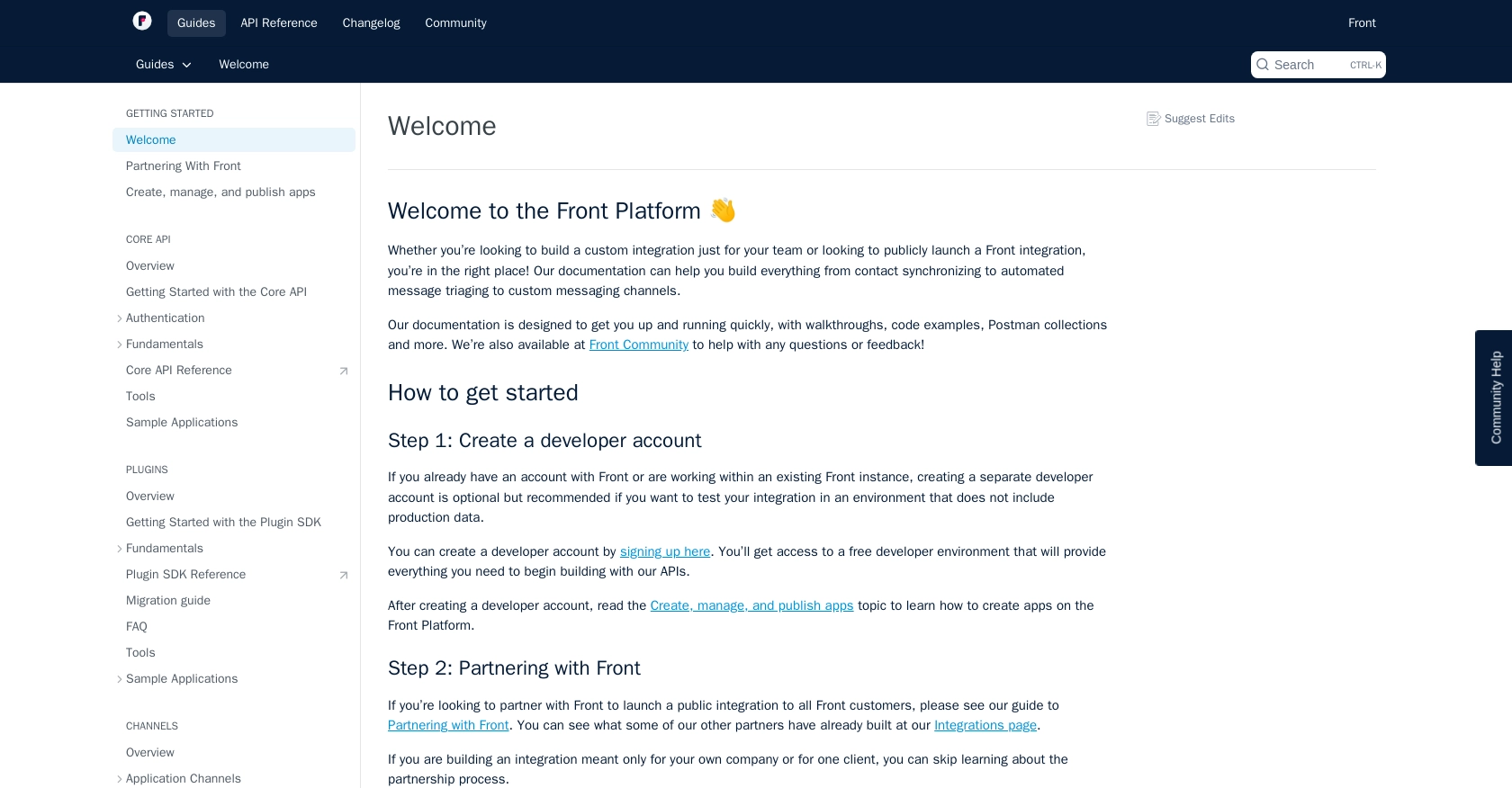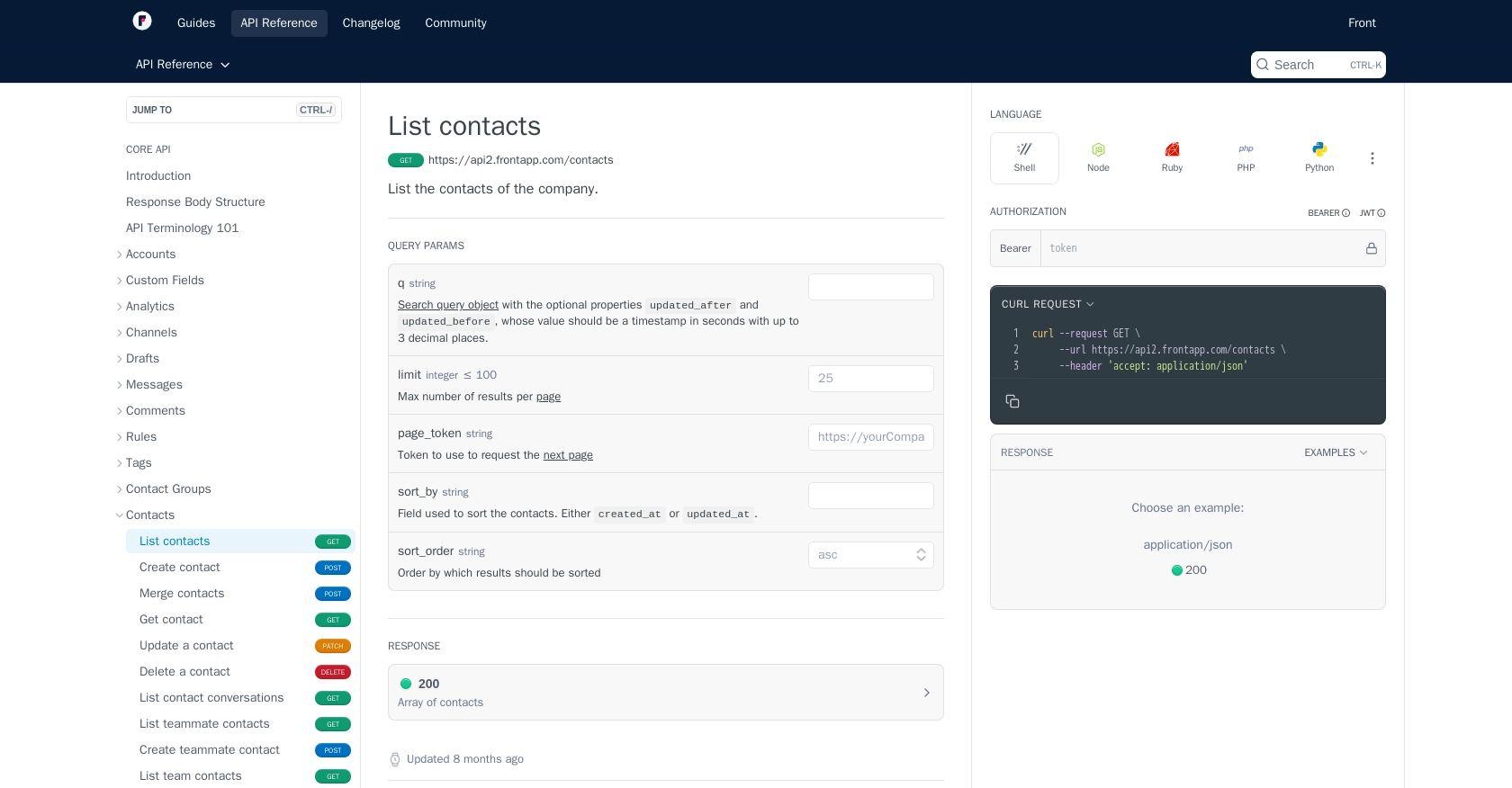Using the Front API to Get Contacts (with Python examples)

Introduction to Front API Integration
Front is a powerful communication platform that centralizes emails, messages, and other communication channels into a single collaborative space. It is designed to enhance team productivity by providing a unified interface for managing customer interactions and internal communications.
Developers may want to integrate with Front's API to automate and streamline communication processes. For example, using the Front API, a developer can retrieve contact information to synchronize it with other CRM systems, ensuring that customer data is always up-to-date and accessible across platforms.
Setting Up Your Front Test Account for API Integration
Before you can start using the Front API to retrieve contacts, you'll need to set up a test account. This will allow you to experiment with the API without affecting any production data.
Creating a Front Developer Account
If you don't already have a Front account, you can create a developer account by visiting the Front Developer Portal. This account provides access to a free developer environment where you can test and build integrations.
- Go to the Front Developer Portal and click on "Sign Up".
- Fill in the required information and follow the instructions to complete the registration process.
- Once your account is created, you'll have access to the developer environment.
Generating an API Token for Front API Access
Front uses API tokens for authentication, allowing you to securely access the API. Follow these steps to generate your API token:
- Log in to your Front developer account.
- Navigate to the API tokens section in your account settings.
- Click on "Create API Token" and select the appropriate scopes for your integration. For this tutorial, you should select "Shared Resources".
- Copy the generated API token and store it securely, as you'll need it to authenticate your API requests.
For more detailed instructions, refer to the Front API documentation.

sbb-itb-96038d7
Making API Calls to Retrieve Contacts Using Front API with Python
To interact with the Front API and retrieve contact information, you'll need to use Python. This section will guide you through the process of setting up your environment, making the API call, and handling the response.
Setting Up Your Python Environment for Front API Integration
Before making API calls, ensure you have Python installed on your machine. This tutorial uses Python 3.11.1. You will also need the requests library to handle HTTP requests.
- Install Python 3.11.1 from the official Python website.
- Install the
requestslibrary using pip:
pip install requestsWriting Python Code to Retrieve Contacts from Front API
Create a new Python file named get_front_contacts.py and add the following code to retrieve contacts:
import requests
# Set the API endpoint and headers
endpoint = "https://api2.frontapp.com/contacts"
headers = {
"Authorization": "Bearer YOUR_API_TOKEN",
"Accept": "application/json"
}
# Make a GET request to the API
response = requests.get(endpoint, headers=headers)
# Check if the request was successful
if response.status_code == 200:
data = response.json()
# Loop through the contacts and print their information
for contact in data["_results"]:
print(contact)
else:
print(f"Failed to retrieve contacts: {response.status_code} - {response.text}")
Replace YOUR_API_TOKEN with the API token you generated earlier. This script sends a GET request to the Front API to retrieve contacts and prints the contact information if the request is successful.
Handling API Response and Errors
After running the script, you should see the contact details printed in your console. If the request fails, the script will output an error message with the status code and response text.
To verify the request succeeded, log in to your Front developer account and check the contacts section to ensure the data matches the response.
Managing Front API Rate Limits and Error Codes
Front API has a rate limit of 50 requests per minute for the Starter plan. If you exceed this limit, you'll receive a 429 Too Many Requests error. The response will include a Retry-After header indicating how long to wait before retrying.
Handle errors by checking the status code and implementing retry logic if necessary. For more information, refer to the Front API rate limiting documentation.

Conclusion and Best Practices for Using Front API with Python
Integrating with the Front API allows developers to efficiently manage and synchronize contact data across platforms, enhancing communication workflows. By following the steps outlined in this guide, you can successfully retrieve contacts using Python, ensuring your applications remain connected and up-to-date.
Best Practices for Secure and Efficient Front API Integration
- Secure API Tokens: Always store your API tokens securely. Avoid hardcoding them in your source code and consider using environment variables or secure vaults.
- Handle Rate Limits: Be mindful of Front's rate limits, which start at 50 requests per minute for the Starter plan. Implement retry logic with exponential backoff to handle 429 errors gracefully.
- Data Standardization: Ensure that contact data is standardized across systems to maintain consistency and accuracy.
- Error Handling: Implement robust error handling to manage different HTTP status codes and provide meaningful feedback to users or logs.
Streamlining Integrations with Endgrate
While building integrations with the Front API can be rewarding, it can also be time-consuming and complex. Endgrate offers a solution by providing a unified API endpoint that connects to multiple platforms, including Front. This allows developers to build once for each use case, saving time and resources.
By leveraging Endgrate, you can focus on your core product while outsourcing the complexities of integration management. Explore the benefits of a seamless integration experience for your customers by visiting Endgrate.
Read More
Ready to get started?
